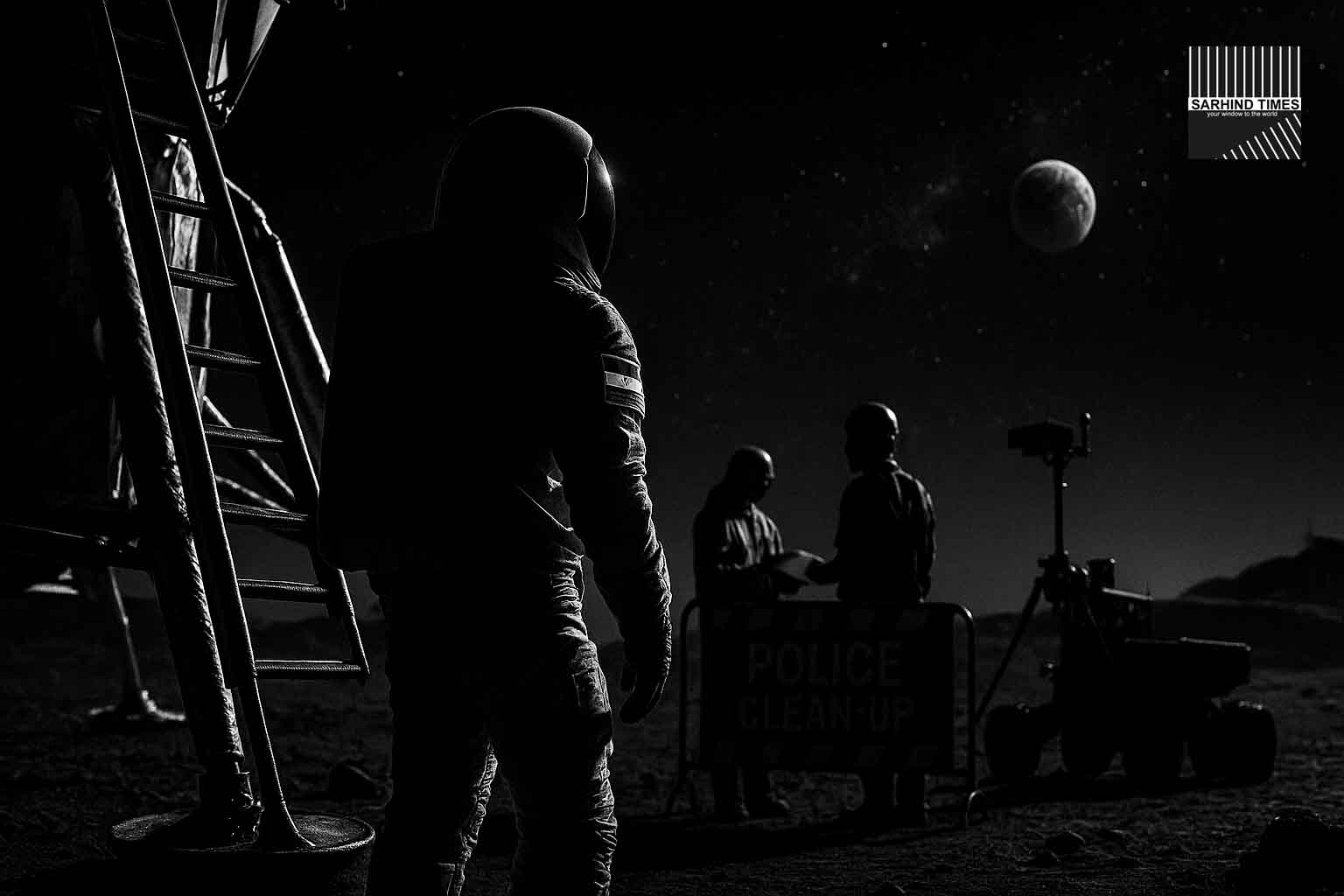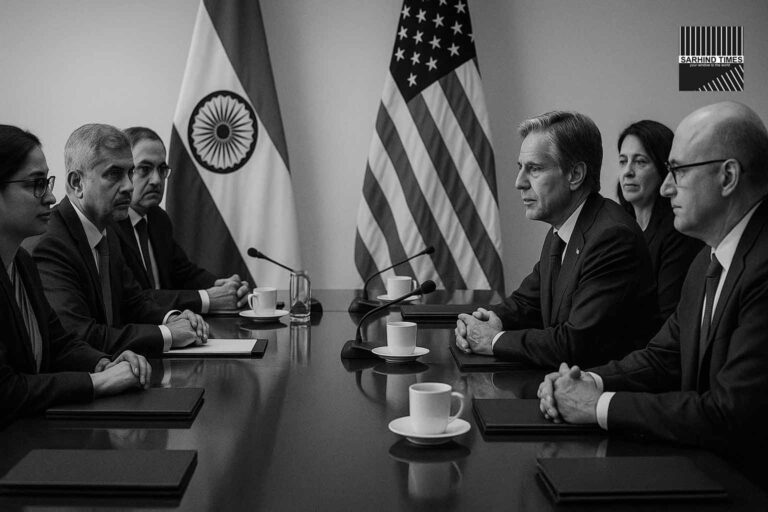From a pathbreaking Earth-science satellite in orbit to an Indian astronaut flying to the ISS with Axiom—and now talks pointing to lunar and Martian cooperation—India and the United States are locking in a deeper phase of space partnership spanning science payloads, navigation/communications, and human-spaceflight interfaces. A joint roadmap is expected to outline near-term experiments and roles.
The moment: why “now” for Moon & Mars
Two milestones in 2025 have moved India–US space ties from promise to performance:
- NISAR is up. On July 30, 2025, India launched the NASA-ISRO Synthetic Aperture Radar (NISAR) mission from Sriharikota—an Indo-US Earth-observing flagship using dual-band radar (NASA’s L-band + ISRO’s S-band) to track Earth’s changing surface at centimeter precision. It’s the most complex joint space hardware the partners have flown, and a trust accelerator for future exploration missions.
- An Indian on the ISS with Axiom-4. NASA, Axiom Space, SpaceX and ISRO teamed up on Axiom Mission-4, placing ISRO astronaut Group Captain Shubhanshu Shukla on a commercial crew to the International Space Station—anchored by commander Peggy Whitson. Beyond its symbolism, Ax-4 pilots microgravity research and human-spaceflight interfaces that India needs ahead of Gaganyaan and for any future lunar forays.
Layer on top: India signed the Artemis Accords in 2023, aligning with U.S.-led norms for transparent and responsible exploration—an important policy signal when you talk about future cooperation on the Moon.
And the politics is explicit: a Feb 13, 2025 U.S.–India leaders’ statement calls 2025 a “pioneering year” in civil space, spotlighting the Ax-4 astronaut plan and NISAR’s launch, and urging expanded collaboration in long-duration human spaceflight and planetary protection. That’s the context for today’s conversations about Moon and Mars missions.
What’s on the table: three tracks of cooperation
1) Lunar science, comms & navigation, and potential contributions to Artemis-era architecture
India’s Artemis Accords signature puts it in the tent; now the practical questions start: Which payloads, which services, which interfaces? On the science side, NASA has already flown a Laser Retroreflector Array (LRA) on ISRO’s Chandrayaan-3, enabling NASA’s LRO to “ping” Vikram for precision geodesy—small hardware, big trust. Expect more of this payload-level collaboration on future lunar missions.
On navigation and comms, India and the U.S. have an established habit of cross-support: NASA’s Deep Space Network (DSN) has supported Chandrayaan-3 and earlier missions under formal agreements. As the Artemis ecosystem builds interoperable lunar communications (think LunaNet concepts), there’s clear scope for India to plug in with ground-segment support and standards work—relevant to the “navigation & comms” bucket discussed by officials. (Interoperability frameworks are being advanced internationally; India can benefit and contribute.)
Bottom line: From LRAs and cross-tracking to eventual lunar relay/positioning services, this is the practical bedrock on which any Moon mission partnership stands.
2) Human-spaceflight interfaces and training pipelines
Axiom-4 is more than a photo-op: it welds together ISS operations, commercial crew logistics, and joint experiment design. NASA’s June 18 update names Shubhanshu Shukla as Ax-4 pilot under Peggy Whitson—a direct bridge to crew training, microgravity research, and operational procedures India needs for Gaganyaan and beyond. Multiple press briefings also flagged the Indian experiments manifest on Ax-4 (bio/food/crew-health studies), a template for scaling human-research cooperation.
Leaders on both sides have already said they want long-duration human-spaceflight collaboration. If India pursues its 2030s goals (Indian space station; human on the Moon), joint ops know-how, EVA training, rendezvous/docking standards, life-support research, and ground systems will only grow more relevant.
3) Mars: a revived agenda with real lineage
India and the U.S. aren’t starting from scratch on Mars. A NASA–ISRO Mars Working Group was set up back in 2014 to coordinate science between MOM and MAVEN and explore future mission options. Today’s “Moon & Mars” discussions are best read as a revival and upgrade—with hard science and data-sharing frameworks that have matured since.
What could Mars cooperation look like? Shared instruments on orbiters or smallsats; relay/comm cross-support; coordinated observations; and eventually technology demos that prepare for sample return or human-precursor logistics. The specific mission architecture will take time—but the working groups and trust mechanisms exist.
What each side wants (and brings)
Why it works for India
- Science per rupee: International payload-sharing and DSN cross-support stretch budgets while increasing discovery. Chandrayaan-3’s LRA and NISAR’s cost-sharing are object lessons.
- Human-spaceflight runway: Ax-4 fast-tracks crew ops and experiment pipelines; connections with NASA and U.S. industry help de-risk Gaganyaan spin-ups.
- Supply-chain access: Under the iCET tech initiative, both sides talk “trusted supply chains.” For India’s booming space startups, U.S. partnerships can mean avionics, sensors, materials, and markets.
Why it works for the U.S.
- Cost-effective engineering and cadence: ISRO’s record in frugal, high-impact missions and its launch infrastructure are strategic complements—see NISAR.
- Talent & tempo: A large Indian talent pipeline (public + private) plugs into U.S. lunar/Mars ambitions with fast-iterating hardware and software expertise.
- Norms and network effects: With India in the Artemis Accords, the U.S. gains a high-capacity partner shaping rules of the road for lunar operations.
Proof of performance: three recent case studies
- NISAR’s ride to orbit
The mission blends NASA’s L-band radar with ISRO’s S-band, flying on GSLV-F16. The payoff is extraordinary Earth-system data for disasters, agriculture, ice, forests and urban change—plus a living template for complex, co-owned spacecraft. - Ax-4 and the human-spaceflight bridge
A mixed crew—NASA veteran + ISRO pilot + European astronauts—demonstrates operational interoperability, commercial-government teaming, and the experiment logistics India will reuse. - Chandrayaan-3’s LRA & global cross-support
NASA’s LRO successfully “pinged” the NASA-provided retroreflector on India’s lander; DSN/ESA cross-support to ISRO missions is now routine under formal agreements. That’s the kind of plumbing future Moon/Mars projects need.
The new conversation: payloads, networks, people
Science payloads
Expect an emphasis on compact, power-efficient instruments that bolt onto Indian or U.S. buses for the Moon (surface and orbit) and, later, Mars orbiters/smallsats. LRA-class devices are low-risk wins; more ambitious plays include volatiles mapping, dust/environment sensors, and precision timing packages. (India is also maturing LUPEX with JAXA; U.S. collaboration could complement, not conflict, via data/payload synergy.)
Navigation & communications
India has already worked with NASA’s DSN; the next rung is plugging into interoperable lunar networks (LunaNet standards are moving) for positioning, timing and relay. Joint work on space comms commercialization and standards bodies strengthens both sides’ Moon/Mars logistics.
Human-spaceflight interfaces
Post-Ax-4, watch for: EVA procedures exchanges; life-support & crew-health research; rendezvous/docking standards alignment; training stints across centers; and mission-ops shadowing—all relevant whether India’s target is an Indian space station in the 2030s or a lunar sortie under a broader coalition.
Risks & realities (and how to manage them)
- Schedule realism: Exploration timelines slip; guard against over-promising on Moon/Mars by committing early to payload-level wins and network interop with deliverables every 6–12 months.
- ITAR & export controls: Early scoping of tech-transfer boundaries prevents bureaucratic drift; focus on standards, interfaces, and jointly designed hardware.
- Space-traffic & debris: Joint progress on SSA (space situational awareness) and planetary protection is already urged by the leaders—critical as both nations ramp launch cadence and lunar ops.
- Commercial bandwidth: Axiom-style missions are great, but sustainable cooperation needs a wider vendor base (big + startups) with clear procurement pathways.
What a near-term joint roadmap could include (practical, shippable items)
- Lunar payload tranche-1 (12–24 months): two to four co-developed instruments for lunar surface/orbit (e.g., precision geodesy 2.0, dust environment sensors), with cross-support agreements baked in.
- LunaNet pilot hooks: an interoperability demo tying an ISRO ground node and a NASA testbed for cislunar comms/nav; publish interface test results.
- Human-research cohort: repeatable, co-funded microgravity experiment calls post-Ax-4; shared biomed protocols; seed grants for Indian labs partnering U.S. PI teams.
- Mars science working plan refresh: reconvene the NASA–ISRO Mars Working Group with an updated agenda: coordinated observations, instrument swaps, and a small-sat concept study for the next window.
- SSA/data sharing MOU upgrade: expand civil-space SSA data channels beyond one-off exchanges to routine, machine-readable products aligned with multilateral standards—useful for both LEO traffic and lunar proximity ops.
Why this matters beyond prestige
- Climate and disasters: NISAR’s exquisite radar time-series will power flood mapping, landslide risk, crop monitoring, and urban subsidence tracking—all with direct policy impact in both countries.
- Connectivity: Lunar relay/navigation tech and Earth-obs data lay foundations for resilient comms and better spectrum management—spillovers that strengthen terrestrial networks.
- Industrial depth: Co-engineering drives supply-chain resilience and spurs private investment; India’s startups can slot into U.S. exploration programs as component suppliers and software partners.
- Standards leadership: Working together on lunar comms/nav standards, planetary protection and data policies lets both shape the rulebook for the “eighth continent.”
The headline facts to know (and cite)
- Artemis Accords: India signed on June 21, 2023, aligning with norms for peaceful, transparent exploration.
- Indian astronaut to ISS (Ax-4): ISRO’s Shubhanshu Shukla flew as pilot under commander Peggy Whitson; the mission cemented human-spaceflight ties
- NISAR launched: July 30, 2025 from Satish Dhawan Space Centre; first-of-its-kind dual-band radar observatory, co-built by NASA and ISRO.
- DSN support & Chandrayaan-3 LRA: NASA provided the Laser Retroreflector Array carried by India’s lander; LRO successfully “pinged” it in 2023–24; DSN aided mission tracking under formal agreements.
- 2025 leaders’ statement: Calls for expanded collaboration in long-duration human spaceflight and planetary protection, setting the stage for deeper Moon/Mars work.
- Today’s coverage: Indian and U.S. officials publicly discussing Moon & Mars cooperation as the partnership’s next phase
#IndiaUS #Space #ISRO #NASA #Artemis #Moon #Mars #NISAR #Axiom4 #TechDiplomacy

























+ There are no comments
Add yours